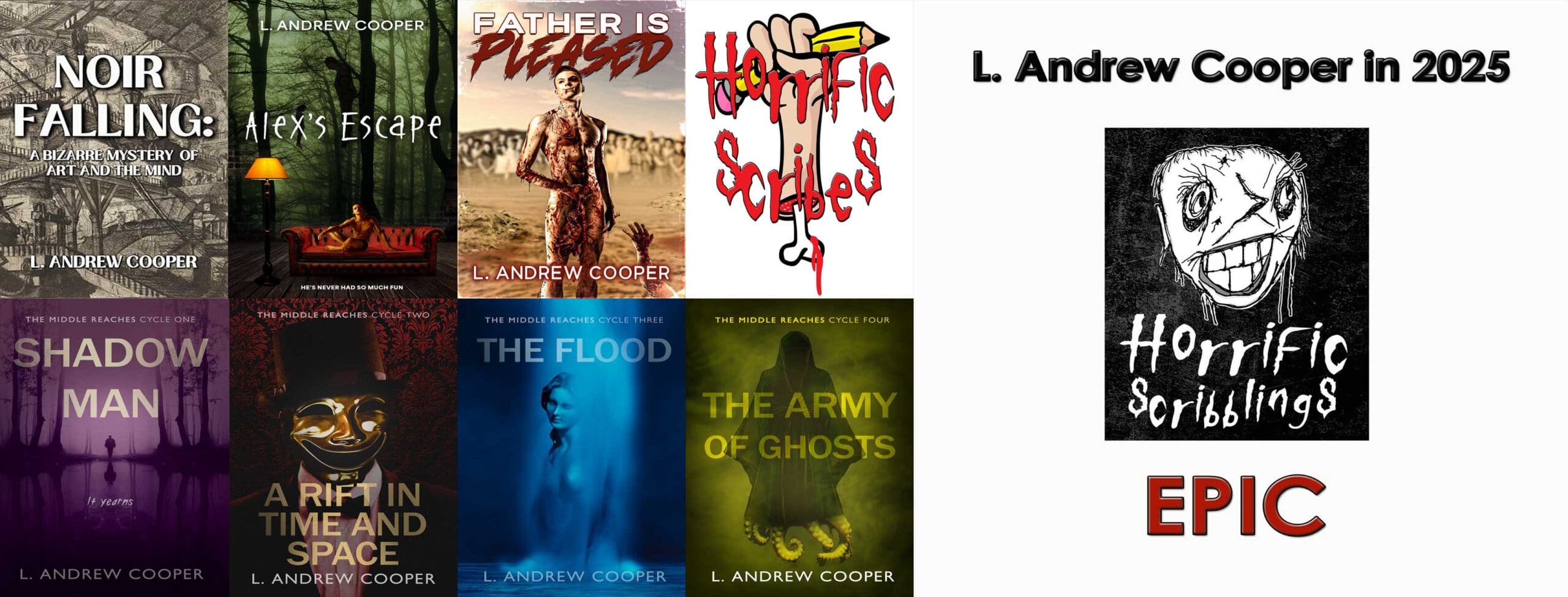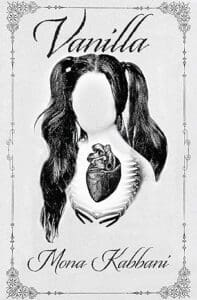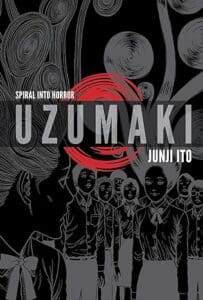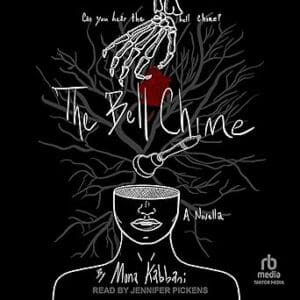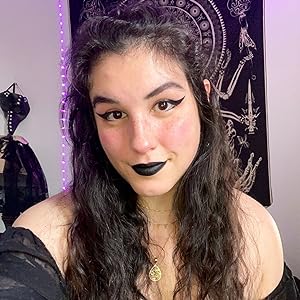Interview with Author Mona Kabbani: The Color of Blood (2024)
Highly articulate author Mona Kabbani devotes some of her dazzling prose to sharing thoughts on art, psychology, violence, and other topics as we delve into her novella The Color of Blood, a read I highly recommend.
The Color of Blood
LOVE, LUST, ART, AND BLOOD.
Void’s greatest fear is being seen as a monster, not an artist. He revels in his fame but hides his greatest secret: his success is attributed to his uncanny ability to see the color of a person’s soul. This color not only infects a person’s aura but their anatomy, turning their insides into dazzling pigment. Void targets those with the rarest colors and drains their blood for his paint. None know of his secret, and he has found solace in the solitude of his life. That is until he meets an unprecedented muse who is more than happy to bleed for him.
“The Color of Blood sees Kabbani dip her toes into extreme horror, then submerge herself fully in its gore and depravity. This horror novella is highly original, shocking, and disturbingly erotic. One should need no further proof that she is a rising star in the world of horror fiction.” — Kristopher Triana, author of Gone to See the River Man
The Color of Blood is the cosmic, psychological horror novel from Mona Kabbani.
The Interview
1. Artistic Ego and/or Male Entitlement. Your narrator, Void, is a successful artist with a gallery devoted to his work, and he seems to think being a successful artist makes him too good for the students and academics interested in him and, well, just about everyone else, too. What inspired your representation of this artistic ego? Of course, he has the power to perceive colors others can’t, evidence of his superiority strong enough to justify killing for his art… but he wants to be perceived as an artist, not a monster. Then again, as an artist he is expected to make something “cataclysmic:” is there any difference between an artist and a monster? As the book’s description reveals, Void meets “an unprecedented muse,” and he feels she “is owed” to him. He later longs to “conquer” aspects of her that impress him. He has a problem with her having “agency” over him. What’s the relationship between Void’s artistic ego and male entitlement? How do you view his attitude toward women?
MK: Void is a character riddled with conflict, a narcissist susceptible to bouts of terrible self-doubt and debilitating existentialism. ‘Monster versus Artist’ exemplifies his tortured existence: the cognitive dissonance of behaving transgressively whilst wishing to be perceived in a god-like light. I wanted to showcase the push and pull of his mental experience thus creating the “tortured artist” trope at a level so granular, I’m hoping for readers to both empathize with and hate him, therefore creating a kind of cognitive dissonance of their own. There was no gender binary at play when I wrote this book. I do not see this as a male-versus-female mentality but simply the behavior of someone in a peculiar predicament.
2. The Color of Sex. When Void’s color perception picks up a rare, exquisite color, it exerts a sensual attraction on him, already erotic but explicitly sexual when combined with physical attraction or touch. To what extent does the sensual, such as vivid color in art, actually blur into the sexual, physical arousal and even stimulation? For Void, the blur into the sexual—with men as well as women—also blurs into violence, and erotic scenes in The Color of Blood certainly blur that line. What’s the relationship between sex and violence? How comfortable are you with the implications of blurring that line?
MK: Void is not, at his heart, a sexual being, at least, not in the way a normal being would invest in such an act. He understands the appeal of sex at a fundamental level, but his glory comes from witnessing the ‘light show’ put on by bodies engaged in motion. He’s more interested in a person’s color, what he can create, than their actual body and spirit. When he meets Zahra, or his past amour, Alexander, only then does he find some value in acts other than the creation of art. Few can crack through his narcissism to be seen as actual people and not colors for his palette. I’m not comfortable with blurring the lines of sex and violence in a realistic sense, but for this specific supernatural instance alongside the metaphor of toxic romance where both parties aren’t in any kind of physical distress, it sure does make an interesting visual.
3. The Color of Gore. Kristopher Triana refers to how you “dip your toes” and then “submerge” yourself into extreme horror with this book. For those of us unfamiliar, is this your first foray into the extreme? Which of your previous works is most comparable to The Color of Blood? How do you feel about writing extremely violent imagery? What aspects of the extreme do you prefer? Is gore art?
MK: This is my first extreme horror story! And I can’t say that any of my past works are comparable. Maybe VANILLA, which has some scenes of gore and violence but isn’t what I would call “extreme.” Writing THE COLOR OF BLOOD was an incredible experience: the story flowed out of me with ease. I enjoy writing extreme horror from what I consider to be a more romantic lens: a bit more purple, a bit more floral, without sacrificing the transgression. I do find gore, or this contortion of the human body, to be an awe-inspiring visual but only in a specific, fictional context. It was important to me that THE COLOR OF BLOOD dealt with willing parties, where the conflict was betrayal and not assault. This is simply my preference, and future stories may take on different contexts.
4. More Ordinary Colors. Sometimes when I was reading Void’s perspective, I was fascinated by its alien characteristics, and sometimes I found myself groaning because he felt like such a familiar asshole. To what extent are you using his serial killing as a reflection on more ordinary, narcissistic people who engage in serial monogamy/monandry? Your bio (below) says you’re obsessed with psychology. I’d say Void’s behaviors, using and discarding people, suggest a narcissistic personality disorder. Did you have any diagnoses in mind, or would you venture any now?
MK: You hit the nail on the head! I answered this in a previous question, but Void is a narcissist with a god complex who also suffers the very human feeling of self-doubt, bringing him back down to Earth and thus making him a walking conflict. You can find this conflict at every angle of his character: from his belief system to his obsession with color despite wearing exclusively dark clothing to his moniker. I think there is something to say for someone who is given an amazing gift that, at the same time, isolates them. Only Void can experience the world the way he does. If someday his egotism were to be alleviated, the same fate would befall him. As much as he might like to, he can never share the truth of his experience with anyone. I’ve always found it such a head-scratcher that it is impossible to describe a color to someone who has never experienced that color for themselves. What about the whole world? It is lonely, in a way.
5. Cosmic Colors. Your book’s description calls it a “cosmic… horror novel,” which strikes me in a couple of ways. First, Void thinks of “the universe” bringing him his unprecedented muse. Do you want readers to think cosmic forces are really at work, or do you prefer for readers to consider more specific forces that might draw the two characters together? Why? Second, the idea of colors beyond human perception, along with some other ideas that appear later in the story, could make this novella qualify as “cosmic horror” in the sense of horror exemplified by H.P. Lovecraft. Would you put your book in this category? If so, what other cosmic horrors inspired you? If not, why do you use the word “eldritch?”
MK: Whether it’s the universe, fate, or coincidence, I leave this to my readers to decide. How do you think you stumble upon that perfect person? There are billions of people on this planet. What guided them to you? As for your second question, I was more inspired by Junji Ito’s work, Uzumaki, than anything. Junji Ito’s work is Lovecraftian, so by this second degree of association, yes, cosmic in the sense of Lovecraft.
6. Art Imitating Art. Art about art demands these sorts of questions. To what extent is your novella, The Color of Blood, like Void’s art, especially (avoiding spoilers) the “The Red” exhibition? To what extent is the audience for your novella like his gallery’s attendees, who love “buckets of blood?” Do any similarities reflect on the moral standing of you, your work, or your readers? Why or why not?
MK: This is an interesting question! Quite meta. Although I do exhibit some irrational bouts of self-doubt that drive me momentarily mad once in a while, I can’t say I personally relate to Void’s experience or rhetoric regarding his art or his viewers.
7. Aestheticism and Decadence. Your themes and imagery bring up some of my nineteenth-century hobbyhorses, Thomas De Quincey’s essay, “On Murder, Considered as One of the Fine Arts” (1827), Charles Baudelaire’s Flowers of Evil (1857), and Oscar Wilde’s The Picture of Dorian Gray (1891). Do you see yourself playing with or even critiquing the ideas in these sorts of works in The Color of Blood? Do you think an actual murder can be considered beautiful from an aesthetic point of view? Should more people recognize beauty in the horrible? Is all art quite useless?
MK: THE PICTURE OF DORIAN GRAY is one of my favorite books. I appreciate its horribleness imbued with beauty. I find it incredibly inspiring. I don’t think I’d ever want to critique a classic but rather add my own flair. I hope to find new ways to break the mold by bringing to life grotesque stories people read in wide-eyed awe. My voice wouldn’t be possible without the foundation of those before me, so if anything, it’s homage or tribute. I do not think actual murder can or should be considered beautiful: this is merely an exploration through a fictional lens, and even then, I prefer for my characters to be willing.
8. Void’s Void. À propos, Void tends to wax philosophical, particularly about how his understanding of the void is changing and about how meaninglessness is taking over his life. How seriously should readers take this philosophizing about art and existence—is the novella posing any or all of these ideas for serious consideration? What do you think of Void’s voidiness?
MK: Void is a brooding artist. His musings are the afflictions of a troubled mind attempting to make sense of a lived cognitive dissonance: his extreme egotism mixed with doubt. It’s up to the reader to decide what is and isn’t valid. What do you value in your own life? What makes you happy? I think it’s okay if a reader pulls a philosophical nugget of truth from a character as awful as Void. We all have our lived experiences: what might click for one, may detonate for another.
9. Access! How can readers learn more about you and your works (please provide any links you want to share)?
You can buy my books off Amazon: they’re available in paperback and ebook (free with Kindle Unlimited). THE BELL CHIME audiobook was just released from Tantor Media. I’m hoping to release audiobooks for my other titles soon.
MK: I am most active on my Instagram: @moralityinhorror. (I also have a TikTok under the same handle.) I share reviews about horror books I’ve read, writing snippets, my life: feel free to reach out and say hello!
https://www.instagram.com/moralityinhorror
You can sign up for my newsletter on my website,
where I share early access information about upcoming books or exclusive sneak peeks of my WIPs. Readers can also purchase signed, personalized copies from my website!
Thank you for your insightful question and for featuring me on your website!
About the Author
Mona Kabbani is a horror fan, writer, and reviewer obsessed with psychology and the human condition. She emulates the conflict of the good versus the bad and all of the in between in her work while providing an entertainingly horrifying experience. She is the author of The Bell Chime, which won the award for Best Horror Novella of 2020 from LoHF, Vanilla, and For You. She is a Lebanese immigrant living the dream in New York City where much of her writing is inspired. You can follow her on Instagram and TikTok @moralityinhorror for more and sign up for her mailing list on her website, www.moralityinhorror.com.
